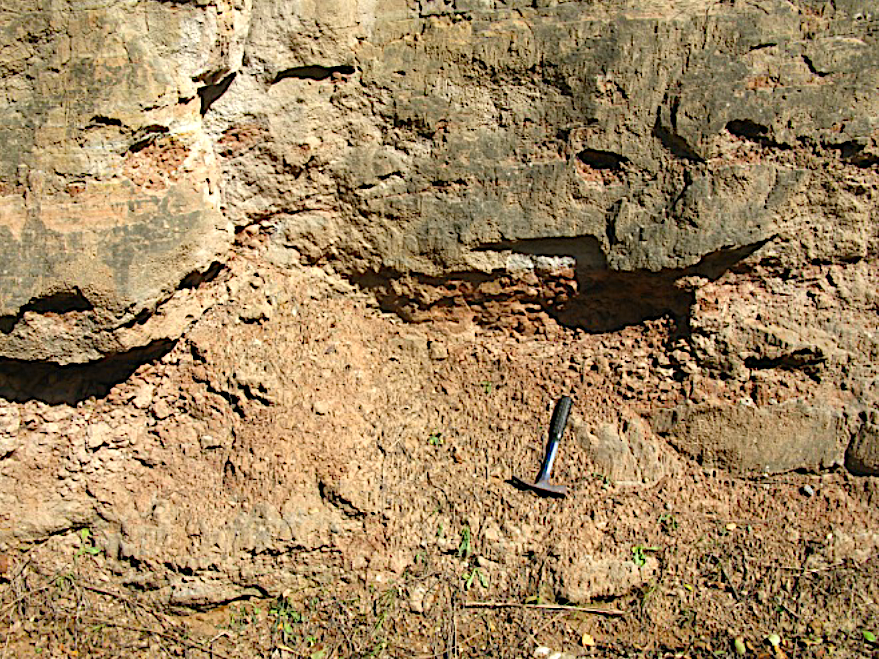Wulong Fm
Type Locality and Naming
Jianghan Basin. The Wulong Formation was erected in the Annals of Geology of Zhigui and Yichang of the Yangtze Gorge area of west Hubei compiled by the Sanxia Stratigraphic Team of the Beijing College of Geology (unpublished). The type locality for the designation is at Wulongkou of Yichang of Hubei. The reference section is from Nanjinguan of Yichang to Honghuatao of Yichang of Hubei.
Lithology and Thickness
The Wulong Formation is represented by a set of gray red, brown red conglomerate, sandstone and mudstone, which is roughly divided into three parts. Basal part is built up by gray red massive conglomerate. Lower part is brown red fine-grained sandstone, siltstone with sandy conglomerate and limestone. Upper part is brown and yellow gray massive fine sandstone, siltstone and sandy mudstone interbedded with gravel-bearing sandstone. It is 1404 m thick.
[Figure: Wulong Formation in Zhoujiapeng section of Yidu, Hubei]
[Figure: Wulong Formation in Wangjiakou section of Dangyang, Hubei]
Relationships and Distribution
Lower contact
The base a conformable contact marked by the appearance of brick-red siltstone with thin-bedded purple red clayey siltstone and shale and light gray red massive conglomerate is distinguished from the Shimen Fm marked by light red and slightly green granule conglomerate and brick-red massive conglomerate.
Upper contact
The top is a conformable contact bounded by the appearance of gray red conglomerate interbedded with brick-red grit at the base of the Luojingtan Fm.
Regional extent
The formation is widespread in Wulongkou, Daqiaobian and Songjiazui of Yichang and Langmuxi of Changyang of the Jianghan basin of central Hubei. It varies remarkably in facies. In the Wangjiaba area of the Changyang County, it is dominated by conglomerate, which increases in amount towards northeast and increases in the amount of sandstone in the Nanjinguan area, with a thickness of 1696 m. Northward to Songjiazui, the lower member is absent and the formation is 714 m thick and further east it thins out. In the Jianghan basin, the Wulong Formation was previously called the Quanshuihe Fm (the upper part); in the Changtao basin of Hunan the Qijiahe Fm(the middle and upper parts); and in the Mayuan basin the Dongxiachang Fm (the upper parts).
GeoJSON
Fossils
The formation yields bivalves Nakamuranaia chingshanensis, Sphaerium yanbianensis, Plicatouunio zhejiangensis, P. multiplicatus; ostracods Cypridea prognata, Mantelliana gigantea, Ziziphocypris simakovi, Monosulcocypris, Euaclistochara mundula; floras Manic parceramosa,; sporopollen grains Schizaeoisporites sp., etc., In Yaowan of Yichang, it also yields sporopollen grains Cicatricosisporites apicanalis, C. tersus, C. dorogensis, C. minutaetritatus, Klukisporites variegatus, Toroisporis pseudodorogensis, Lygodiumsporites subsimplex, Schizaeoisporites cretaceus, S. phaseolus, etc.
Age
Depositional setting
It is suggestive of continental deposition.
Additional Information

